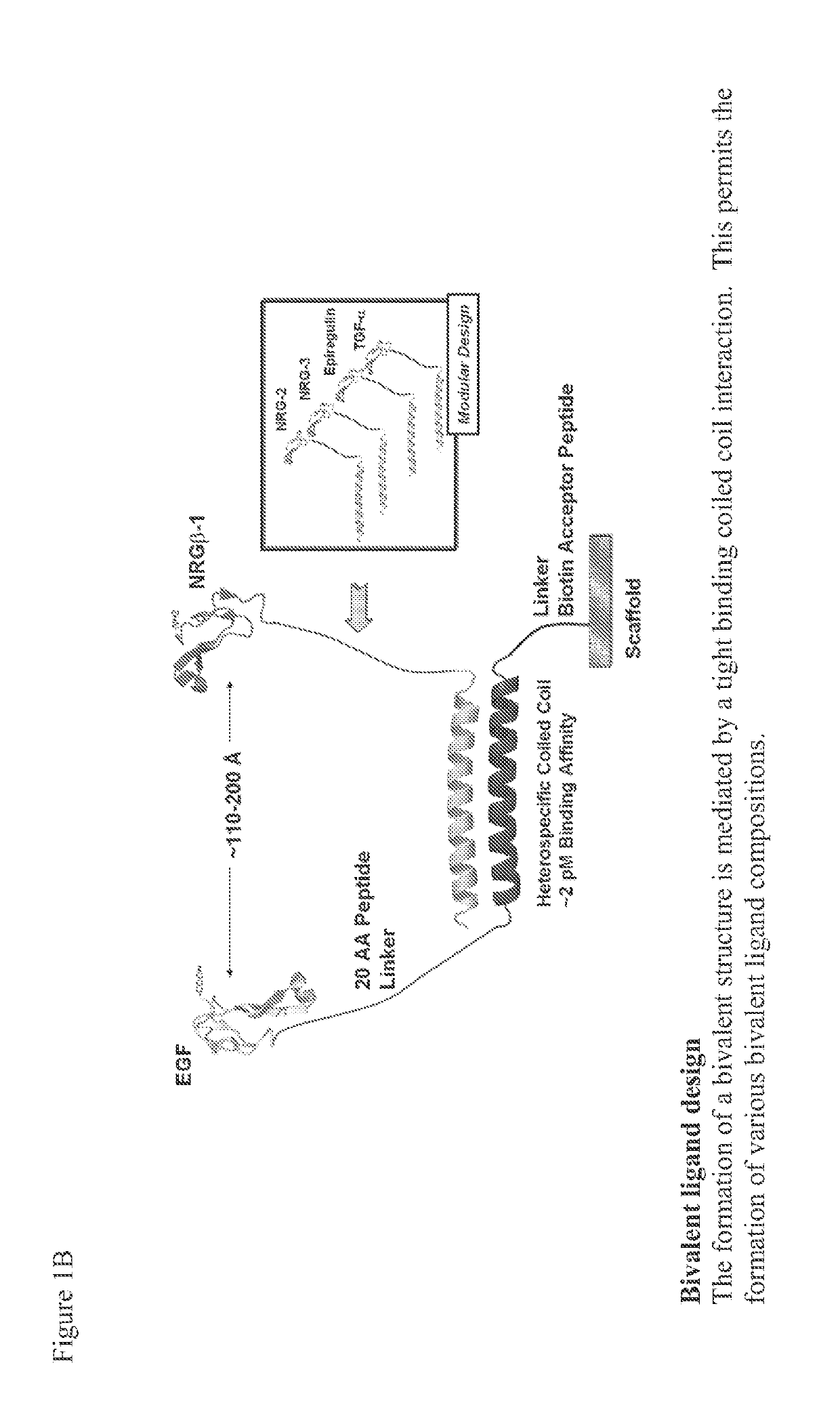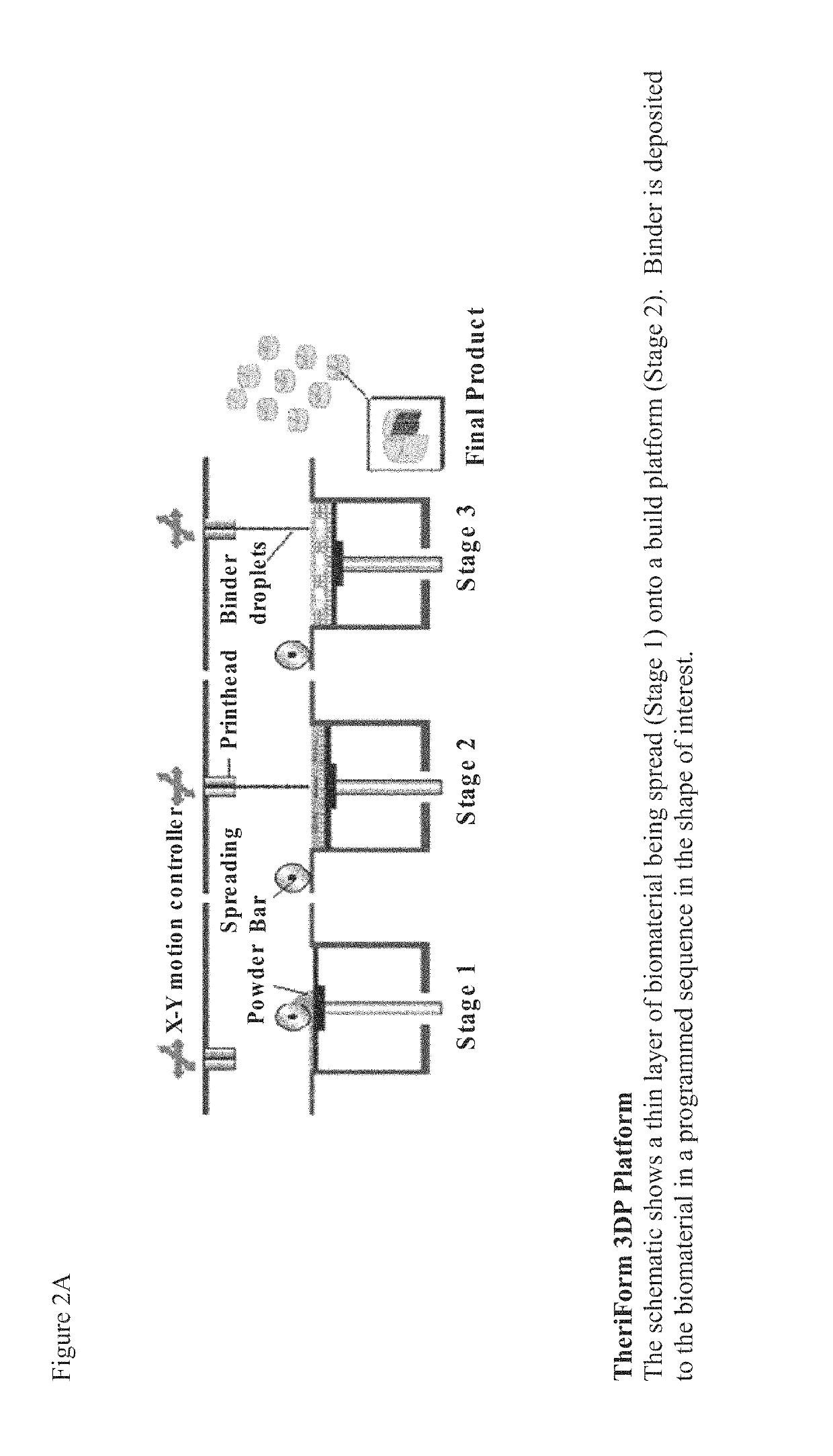Tricalcium phosphate binding peptides and uses thereof
a technology of tricalcium phosphate and binding peptides, which is applied in the direction of peptide/protein ingredients, skeletal/connective tissue cells, prosthesis, etc., can solve the problems of limited handling and limited continued evolution of medical products, and achieve the effect of stable surface tethering of additional proteins
- Summary
- Abstract
- Description
- Claims
- Application Information
AI Technical Summary
Benefits of technology
Problems solved by technology
Method used
Image
Examples
example 1
Discovery and Application of BTCP Binding Peptides
Fabrication of BTCP and BTCP-polymer Composite Scaffolds
[0097]Scaffolds were fabricated at Therics (Akron, Oreg.) from either BTCP or a composite of BTCP and polylactide-co-glycolide (PLGA) using the TheriForm™ 3D rapid prototyping platform (Zeltinger, J. et al., Tissue engineering 7,557-572 (2001)). Briefly, to create BTCP scaffolds, granulated BTCP powder was sintered and sieved. Scaffolds were fabricated in the shape of a cross by depositing binder in a programmed sequence onto a BTCP powder bed containing a mixture of calcium phosphate and sucrose as a porogen. The scaffolds were then sintered for 20 h, dried for 1 day, leached for 2 days to remove porogen, and dried one day to yield crosses measuring 5×5×3 mm (FIG. 2B). Each implant was approximately 60% porous with a mean pore diameter of 60 microns and a pore diameter range of 5-900 microns.
[0098]The internal structure showed an open spongy type structure (FIG. 2B). When multi...
example 2
Characterization and Modification of BTCP Binding Peptides
[0134]To address clinical translation, where EGF is bound to scaffolds containing BTCP, protein engineering approaches including phage display were used to create a fusion protein of EGF with a peptide that exhibits high affinity binding to BTCP; these two moieties were separated by a protease-resistant spacer to enhance accessibility of the EGF (See FIGS. 28 and 29). Successive iterations of the specific protein sequence employed in efforts to improve the yield and properties of the protein were examined; modifications included the nature of the purification moiety and the composition of the spacer. Also, several purification strategies were investigated. A sequence and purification strategy was defined wherein one key facet of the strategy was including a step to remove endotoxin to produce a final product with endotoxin levels of 38.9 EU / mg, which is 10-fold below commercial standards set at 10-C1-EGF), was made and purifi...
PUM
| Property | Measurement | Unit |
|---|---|---|
| size | aaaaa | aaaaa |
| mass | aaaaa | aaaaa |
| pore size | aaaaa | aaaaa |
Abstract
Description
Claims
Application Information
 Login to View More
Login to View More - R&D
- Intellectual Property
- Life Sciences
- Materials
- Tech Scout
- Unparalleled Data Quality
- Higher Quality Content
- 60% Fewer Hallucinations
Browse by: Latest US Patents, China's latest patents, Technical Efficacy Thesaurus, Application Domain, Technology Topic, Popular Technical Reports.
© 2025 PatSnap. All rights reserved.Legal|Privacy policy|Modern Slavery Act Transparency Statement|Sitemap|About US| Contact US: help@patsnap.com



